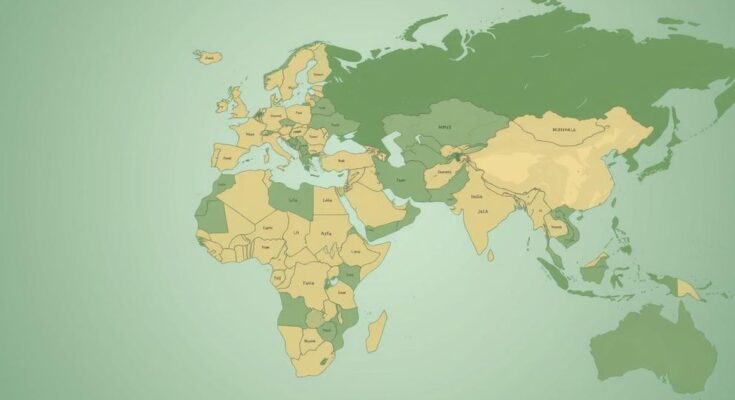President Trump has proposed an expanded travel ban for forty-three countries, organized into three categories (red, orange, yellow) to enhance national security. Citizens from the red list face a full ban, while those on the orange list will require additional vetting. The yellow list includes nations that must address their screening deficiencies within sixty days. This move builds on Trump’s previous immigration policies, contrasting with Biden’s reversals of earlier travel bans.
In a recent proposal, President Donald Trump has announced an expanded travel ban targeting forty-three countries, organized into a three-tier system. This initiative follows an executive order signed on January 20, instructing cabinet members to identify nations requiring travel restrictions due to inadequate vetting and screening processes. The proposed ban seeks to enhance national security by limiting entry from high-risk countries, a continuation of policies from Trump’s first term.
The draft proposal establishes three categories: red, orange, and yellow, reflecting varying levels of restrictions. Currently in draft form, this list may be modified before finalization as the administration reviews its accuracy and the status of each nation.
Countries included on the red list, which encompasses eleven nations, would face a full travel ban due to severe deficiencies in their vetting procedures, posing notable national security risks. Citizens of these countries will be completely barred from entering the United States as part of heightened security measures against ongoing global threats.
Conversely, the orange list features ten countries where citizens will experience limited restrictions. Though not entirely banned, they will need additional vetting actions, such as in-person interviews, to obtain visas. These nations have been flagged for their insufficient vetting capabilities, which are under close scrutiny by U.S. authorities.
The yellow list comprises twenty-two countries primarily in Africa, which have sixty days to rectify their screening and vetting issues. If improvements are not made, these countries risk being reassigned to the more restrictive red or orange lists.
This travel ban proposal aligns with Trump’s objective to bolster U.S. border security and mitigate potential threats. His January 20 executive order underscores the necessity of preventing entry to individuals who may endanger the populace, including those affiliated with terrorism or criminal activities. In contrast, former President Joe Biden had rescinded Trump’s travel bans, advocating for a more welcoming approach reflective of American traditions.
The proposal’s implications for U.S. immigration policy signify a continuation of a hardline stance towards international entry and security measures, representing a significant aspect of the current administration’s agenda.
In summary, President Donald Trump’s proposed travel ban seeks to implement a three-tier restriction system targeting forty-three nations to bolster national security. With distinct lists defining the levels of restriction—red, orange, and yellow—the administration aims to address deficiencies in vetting and screening. The potential impact on immigration policy remains significant, especially against the backdrop of previous reversals by the Biden administration.
Original Source: www.travelandtourworld.com




